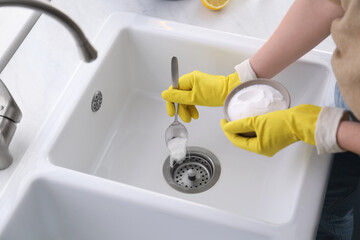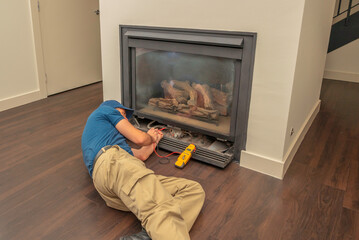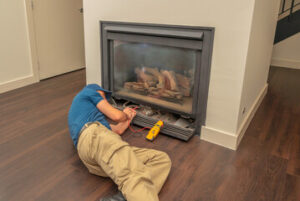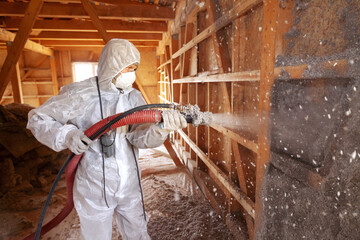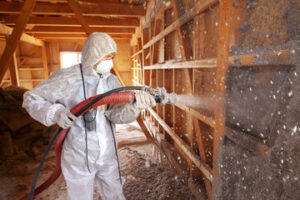Drain Cleaning Tampa is the process of removing all of the grime buildup from a drain. Clogs can be caused by a variety of factors and can result in bad odors, slow drainage, and other issues.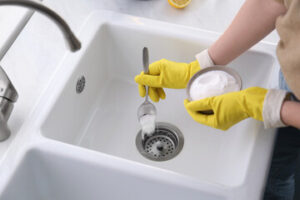
Often times, homeowners turn to chemical drain cleaners to resolve their clogs. These chemicals can be extremely damaging to pipes and plumbing systems.
Salt is a common household item that has numerous uses, including being an effective drain cleaning ingredient. When combined with hot water, it creates a powerful flushing agent that can scrape residue and dissolve clogs. It can also be used in combination with other drain cleaners to help deal with more stubborn or persistent clogs. To use salt and hot water as a drain unblocker, make a 50/50 solution of hot water and salt, then pour it down the blocked drain. Repeat as necessary to clear the clog. Be sure to keep the water temperature below boiling, especially if your home has metal pipes, as high temperatures can soften or melt them. Also, be careful not to scald yourself when pouring the hot water down the drain, as this can cause serious burns.
It makes sense in theory that pouring a coarse substance like salt down your drains would help break up whatever is causing it to clog and that the chemical makeup of the salt itself would somehow interact with the clog and cause it to disintegrate. However, this is not actually what happens when you pour salt down your drains, at least not on its own.
Instead, salt is best used as a component of drain cleaners, along with other ingredients like baking soda and vinegar. This is particularly helpful if you have a grease-based clog in your kitchen drain, as this combination will disintegrate and remove the greasy buildup from your pipes.
To use this mixture, pour a cup of salt and a cup of baking soda down your drain at night, then follow it with a pint and a half of boiling water the following morning. You can also combine these ingredients with liquid grease-fighting dish soap to get an even more powerful drain cleaning mixture that will clear nearly anything from your pipes.
While you can use this on a regular basis to clean your drains, be sure to use it sparingly and in conjunction with other drain cleaning ingredients, as it is not very good for your pipes or the environment if used too frequently. Also, be careful when using this method if you have plastic pipes, as the extremely hot water can melt or degrade them over time.
Plunger
A clogged drain can be a major nuisance, but a plunger is one of the most inexpensive and convenient ways to solve it. This simple plumbing tool can be found in almost every household and is easy to use. It can even clear clogs in toilets! However, it is important to know how to use your plunger properly in order to get the best results.
First, make sure the plunger cup is completely immersed in water. This will create a seal around the drain opening, keeping air from getting into your pipes. Next, push down on the handle—gently at first—forcing the air out. Then begin plunging with quick, deliberate thrusts, directing the pressure down the drain without lifting the handle high enough to break the seal. Continue this action for approximately 20 seconds. After this, pull the plunger away, and the clog should be cleared.
If plunging doesn’t work, you may need to try a more aggressive drain-clearing solution. Liquid drain cleaners are harsh chemicals that can cause burns to the skin and eyes, and they can also be dangerous to the environment if they spill or splash. If you decide to use liquid drain cleaner, it is recommended that you wear protective gloves and goggles to avoid splashing.
Another option is to use baking soda and vinegar. Mix equal portions of these ingredients and pour them down the drain, then wait 15 minutes before rinsing with hot water. You can also try a dish soap and hot water solution by placing a few tablespoons of dish soap in your drain, followed by hot water.
Finally, you can try using a plumber’s snake. These plastic-coated, wire-like devices are narrow and flexible with a series of barbs. They are designed to fit into a sink pop-up assembly and are fed down the drain pipe while cranking the handle. While a plumber’s snake is more expensive than a drain plunger, it can be effective if the other methods don’t work.
Baking soda and vinegar
Baking soda and vinegar work as natural drain cleaners that can help dislodge and break down food particles, hair, soap scum, grease, oil, and other organic material that can clog your drain. This household product is also effective at killing germs and odor-causing bacteria in your drains and pipes. Plus, it’s an affordable option that you probably already have in your kitchen pantry.
The chemical reaction that happens when these two household products are combined creates carbon dioxide bubbles that help loosen greasy, fatty materials blocking portions of the pipe. This bubbling action works in a similar way as some commercial foaming drain cleaners, but without the toxic chemicals.
To use this home remedy, pour a cup of baking soda down the drain, followed by a cup of white vinegar. Wait a few minutes and watch for the audible fizzing reaction as the ingredients neutralize one another. Once the fizzing stops, flush the drain with a pot of boiling water. This hot water will soften any fatty buildup and allow the baking soda and vinegar to clear away stubborn clogs.
While this method is effective at cleaning and disinfecting your sink, it is not as strong as a professional drain snake or homemade plumbing snake and should only be used to dislodge relatively small clogs. If the clog is serious or if it doesn’t disappear with this solution, try using the professional drain cleaning services of Pristine Plumbing to remove it.
It’s important to note that this method will corrode the metal of your drain and can cause damage to the pipes if overused. It’s recommended that you use this method no more than once a month to keep your drain clean and healthy. If you notice any rust spots on your drain after using this method, be sure to clean it immediately with water and a steel wool pad. This will prevent a more severe and costly corrosion problem down the road. For more information about drain cleaning and other plumbing services, contact a professional at Pristine Plumbing. We serve Orange County and can help with all of your plumbing needs.
Plumber’s Snake
When a drain clog can’t be removed by cleaning the trap or plunging, you may need to use a plumber’s snake. Also known as a drain auger, this is a long, flexible metal cable with a cone-shaped tip that works to break up and remove drain blockages. It is similar to a drill bit, but it is designed for pipes and can be fitted with various blade sizes and lengths to handle different types of materials.
Before using the snake, it is a good idea to protect yourself and your work area with gloves and a bucket to collect any debris that might fall out of the pipe. Also, consider loosening the screw that holds the cable to its housing, allowing you to pull it out and back in as needed. This will prevent the snake from becoming stuck inside the drain and allow you to continue working on the clog.
Depending on where the clog is, it may be necessary to disassemble the P-trap (the U-shaped section of pipe under your sink) or remove the vent stack. If this is the case, you will need to prepare the area by putting down old towels and wearing rubber gloves to protect yourself from any splashes or debris that might be produced.
After using a drain snake, it is a good idea to rinse it out with clean water before pushing it back into the drum. This will help prevent water from pooling and causing the cable to rust, which can shorten its lifespan. It is also recommended to wrap the cable in a rag to prevent it from catching on anything else while it is being pulled out of the drain.
Both a plumbing snake and a drain auger are effective tools for removing most common household clogs, such as food scraps, hair, soap scum, and paper products. However, if your clog is more severe or caused by something that may be harder to remove, it might be time to call in a professional. Avoid trying to resolve a difficult drain clog on your own to avoid further damage to your pipes and potential health hazards for yourself and your family.

